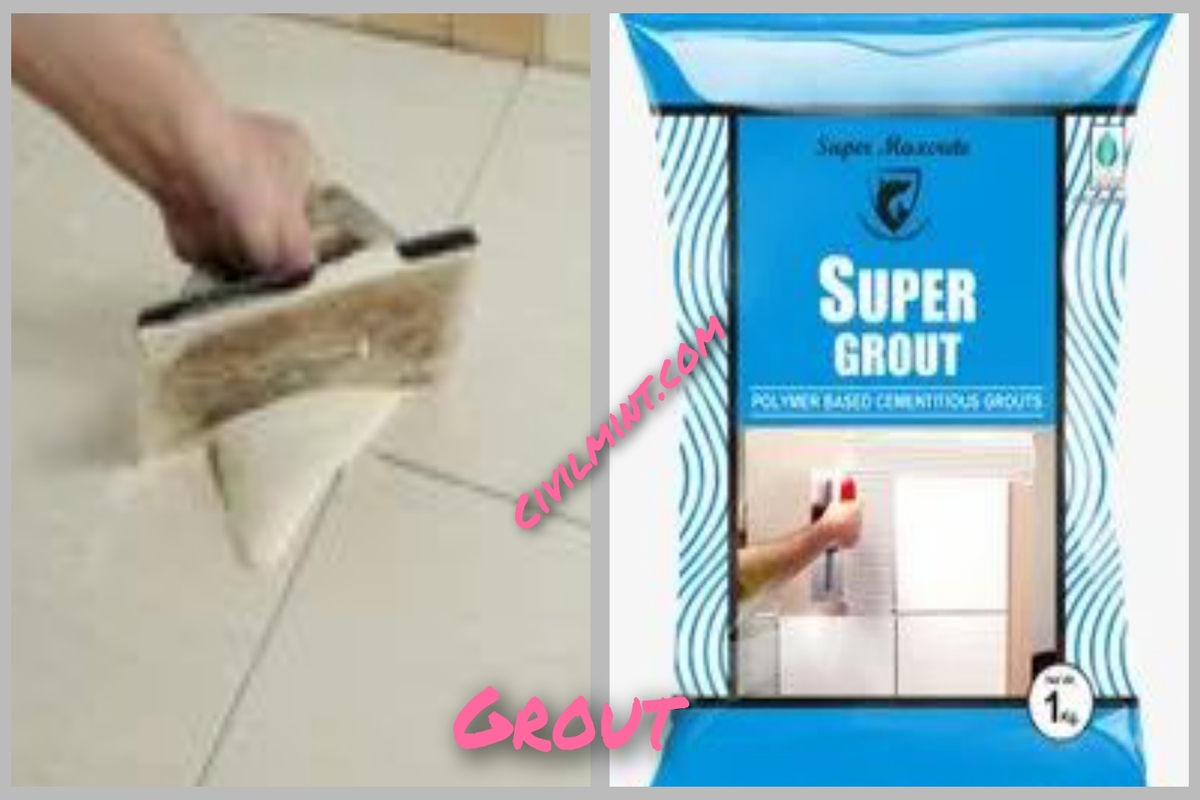This article explains what grout is. We will also discuss the various types of grout and their uses.

Table of Contents
What Is Grout?
Grout is a commonly used adhesive mixture that typically consists of Portland cement, water, and occasionally sand.
It is a crucial component when installing any type of tile surface, as it is used to fill the spaces between tiles.
Although mortar is utilized as the adhesive beneath the tiles, grout is used to fill in the gaps between them.
Standard grout is typically sold as a dry material and is activated by mixing it with water to create an adhesive substance.
For those who want to save time and ensure a uniform finish, pre-mixed grout is also available.
Once the tiles are set in the mortar, a grout float is used by contractors to spread the grout evenly over the surface of the tiles.
Types Of Grout
Grout is a crucial element in tile installation as it fills the gaps between tiles, providing stability and preventing moisture from seeping in. There are several types of grout available in the market, but three of the most popular ones are unsanded grout, sanded grout, and epoxy grout.
I also advice you to read my article on Sanded Vs Unsanded Grout.
Unsanded grout is a cement-based grout that lacks sand, giving it a thinner consistency. This type of grout is best used for tile spacing that is less than ⅛ inch thick.
Sanded grout contains sand in its cement mixture, making it thicker and better suited for tile spacing that is more than ⅛ inch wide.
Epoxy grout is primarily made from resin instead of cement, resulting in a hard finish that is resistant to cracking and leakage. This type of grout is best used for countertops and floors. However, it is harder to install and dries quickly, so contractors need to work in small batches. Epoxy grout also has a shinier finish that may not work with every client’s aesthetic.
Benefits Of Grout
Grout is an important component when it comes to tile flooring. It fills the gaps between tiles and prevents dirt from getting underneath them, keeping the tiles clean and preserving the adhesive’s strength. This reduces the likelihood of tiles popping up over time.
Grout strengthens the tile adhesion from side to side. Mortar alone would eventually cause shifting, but grout compensates for the imperfections that arise when installing tiles, preventing shifting between them.
Grout increases slip resistance, particularly in shower areas. Even if you use a smooth porcelain tile, the textured grout line provides enough resistance to make tiled floors safer to walk on, even when wet.
My Advice
Choosing the right grout color is essential as it can significantly affect the overall look and feel of the space being tiled. There are numerous colors available to choose from, and selecting the right one can enhance the beauty of the tile and the overall aesthetic of the room.
